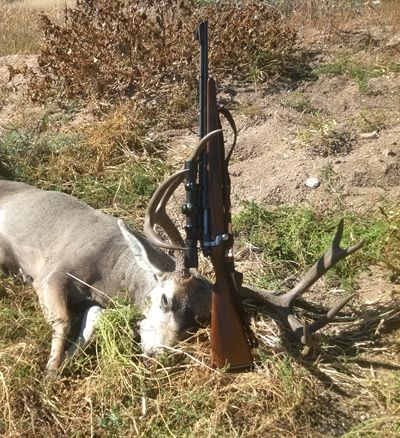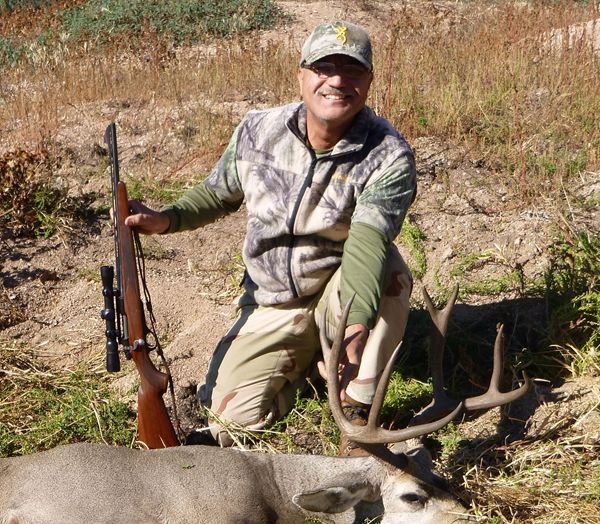I have said before in these pages, that I love deer hunting, even though
I’m not very good at it. I took my first buck in 1995. Despite hunting
deer just about every year since then, I have taken only two other bucks
in my hunting career. All three were young bucks. The last one I took
in the year 2000. So for many years I have had only three sets of small
antlers hanging on my wall.
Two years ago, I was hunting the thick juniper country north of Prescott.
I found a waterhole in the juniper jungle that was only accessible by an
ugly quad trail.
I had carved out a nice little sit-spot near the top of a ridge that
overlooked the water hole from a distance of about 150 yards. On that
hunt, I explored other territory in the mornings, and would come and sit
this spot in the afternoons. I never had competition from any other
hunters while I hunted from this overwatch.
On my fourth afternoon, I finally had a buck come in. He was a small buck,
a “pronghorn” buck. No, he wasn’t an antelope, he was a yearling deer.
Because I had my rifle up on a Caldwell DeadShot FieldPod, I was able to
put perfectly steady crosshairs on his vital zone. The young buck had no
idea that he had been painted by a deer sniper’s reticle. But since I
already had three other similarly-sized sets of antlers on my wall, I
decided to let this little guy walk. That was my only opportunity for the
season, so I had to be happy with a tag sandwich.
For the 2014 deer season I was drawn along with Gerhard and two of his
work buddies, Ron and Daniel, for this same area. The country ranges
from oak grassland at the lower elevations, to Ponderosa pine country at
the highest. In between, there is an extensive zone of thick juniper and
manzanita. Though I had hunted this unit before, this would be the first
time for the other guys.
Gerhard and his buddies made several trips to the area to scout the country,
but I knew exactly where I wanted to go. My whole plan for this year’s hunt,
was to sit in my sniper spot over the waterhole for the entire time. The
season was ten days long. I was prepared to spend all ten days if need be,
sitting this spot.
There was a good camp spot about a mile away from the waterhole. To make
sure that I could claim this camp, I asked my son Ben, if he would mind
camping at the spot starting the Tuesday night before opening day, Friday.
He agreed. I went up there with him late on Tuesday afternoon to set up a
basic camp. We didn’t take up all my gear, just enough for him to be
comfortable for the two days. We got camp setup just before dark, then I
left because I didn’t have THAT many vacation days left!
But here’s the thing: The juniper jungle is almost impossible to hunt any
other way besides sitting at a water hole. The vegetation of juniper, piñon,
and manzanita is so thick that you cannot see more than 15 yards in front of
you. Any deer hiding in this jungle will hear you coming from 100 or more
yards away. There were no other water holes near this camp for my buddies
to hunt. As a result, they chose to hunt other, more friendly parts of the
unit, and I would never meet up with them during the hunt  .
.
On my arrival to camp late Thursday afternoon, Ben reported that he had a
herd of does walk right through camp the morning before! So the deer were
definitely here. I unloaded most of the rest of my gear from the truck, and
as we still had a little light left in the day, we hopped into the Polaris
Ranger to head to the water hole.
Rather than lugging the chair and FieldPod (and some other stuff) to the sit
spot in the morning, I wanted to take the opportunity to drop off the stuff
tonight. Going to the water hole this evening before opening day was a little
risky. We would be intruding into the area just before sundown, prime time for
deer movement. But this would allow me to lighten my load for the morning hike
in. I also wanted to show Ben the cool sniper spot that I was planning to sit
for the hunt.
Hike in? Yes. I used the Ranger to drive up to about ¼ mile of the water hole,
but I would hike the last of it. This was to try to minimize my disturbance of
the water hole area.
Ben would spend this one more night at the camp, but he would leave in the
morning. There was no sense in him hanging around when all I’d be doing was
sitting all day. Pretty boring. Plus, we might spend too much time talking
if he hung out with me, which could mean that no deer would ever show.
So I got up at O-dark-thirty the next morning while Ben still slept in his tent.
He must have awakened when I started the Ranger and drove off though. I reached
the parking spot just as enough light pierced the veil of night that I didn’t
need a flashlight to follow the trail down to the water hole.
There was a reason why, two years ago, that I did not sit this spot in the
mornings. The sit spot faces due south. Just to the west of me there is a
large juniper that blocks most of the late afternoon sun. But there is no
natural cover to block the sun from beating down on me from dawn through
mid-afternoon.
Even in the late afternoon, the juniper is not quite thick enough to completely
block the sun. On that hunt two years ago, I ended up pulling a poncho out of
my pack which I strung up in the tree to keep the afternoon sun off of me. But
as the dawn sun rose over the southeast ridge, my problem was the totally open
exposure on the opposite side where there was no tree to provide any help.
I hinted that when Ben and I dropped off the chair and the FieldPod, that we
also left “some other stuff.” A couple of months ago in these pages, I talked
about the subjects of wilderness survival
and “bushcraft.” I mentioned Dave Canterbury’s 10 C’s of wilderness survival,
which included “Cover”. I said that I had never packed emergency shelter in my
hiking pack, but that maybe I should start. The closest thing I have packed on
my hikes is that poncho. A single poncho makes a very small shelter. Much
better is a tarp of at least 8 feet by 8 feet. I also said that a hunter might
find a camo tarp very useful for making a blind. I have now added one to my kit.
I opted not for a typical cheap polypropylene tarp, but one made specifically
for outdoor expedient shelter, a bushcraft tarp. I found this tarp on Amazon.
It’s made by an outfit called Aqua-Quest. The model is called the
“Defender”.
It measures 10 feet by 7 feet and it is made of “70 Denier Nylon Fabric with Heavy
TPU Coating”. Instead of grommets, it has 18 reinforced webbing guy loops &
ridge line tie points. There are 6 web loops on each 10 foot side, plus 6 more
down the center of the ten foot length, attached to a black nylon web ridge line.
These sewn webbing loops are much stronger than grommets.
To go along with the tarp, I assembled a tarp tie-out kit which I packed in a
Cordura canvas zipper pouch. The tie-out kit consists of a good number of
pre-cut lengths of paracord, some lightweight aluminum stakes, and a collection
of very small aluminum carabiners.
Ben and I also carried in and dropped off two cheap hiking poles. With two poles,
one could easily erect a simple A-frame tent using the tarp, or as you can see
from the opening photo, other useful configurations are possible by taking
advantage of what nature provides. I would have preferred black or green poles,
but for the price, I can live with red.
To create the roof of my deer sniper’s shelter, I used one of the loops along
the center ridge to pull up the center of the tarp by tying it to an overhead
branch of the tree. This provided ample headroom under the cover with no center
pole to get in the way.
6mm Remington Model 600
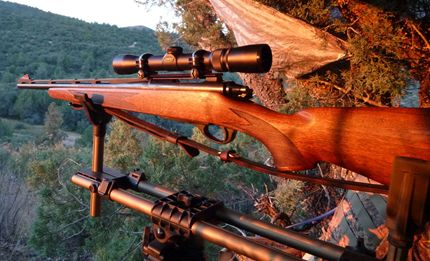
|
 This is the rifle that turned me on to the Remington 600 in the first place.
I’ve talked about it in these pages a number of times. I mentioned it in my
6mm Mild Bunch story, and more
recently in my story on the 50th anniversary of the Remington
Model 600.
This is the rifle that turned me on to the Remington 600 in the first place.
I’ve talked about it in these pages a number of times. I mentioned it in my
6mm Mild Bunch story, and more
recently in my story on the 50th anniversary of the Remington
Model 600.
 I received it in well used shape. It had a poorly mounted, old and hard vented
recoil pad on it when I got it. The original finish was flaking off, so I stripped
what remained, and refinished it with an oil finish.
I received it in well used shape. It had a poorly mounted, old and hard vented
recoil pad on it when I got it. The original finish was flaking off, so I stripped
what remained, and refinished it with an oil finish.
 From the factory, the M600 was equipped with a flat plastic butt plate. Adding a
recoil pad in place of the flat plate added about an inch to the length of pull.
This made me have to stretch my neck to get comfortable behind the scope. So I
cut off about an inch of the walnut stock and replaced the recoil pad with a fresh
new one. LOP is now 13-5/8”.
From the factory, the M600 was equipped with a flat plastic butt plate. Adding a
recoil pad in place of the flat plate added about an inch to the length of pull.
This made me have to stretch my neck to get comfortable behind the scope. So I
cut off about an inch of the walnut stock and replaced the recoil pad with a fresh
new one. LOP is now 13-5/8”.
 As received, it had an old cheap Bushnell fixed 4-power scope on it. The iron
sights, both front and rear, had been removed and were lost to the sands of time.
I replaced the old Bushnell with a 2.5-7x28mm Japanese Weaver scope.
As received, it had an old cheap Bushnell fixed 4-power scope on it. The iron
sights, both front and rear, had been removed and were lost to the sands of time.
I replaced the old Bushnell with a 2.5-7x28mm Japanese Weaver scope.
 When I acquired the .308 Model 600 earlier this year, it too had no rear sight,
but it still proudly wore its original shark fin front sight. Now the 6mm had
to get a shark fin on its nose as well. I was pleasantly surprised to find that
Numrich Arms (https://www.gunpartscorp.com/) had the part available for a very
reasonable cost. Now the 6mm too, proudly wears a shark fin front sight.
When I acquired the .308 Model 600 earlier this year, it too had no rear sight,
but it still proudly wore its original shark fin front sight. Now the 6mm had
to get a shark fin on its nose as well. I was pleasantly surprised to find that
Numrich Arms (https://www.gunpartscorp.com/) had the part available for a very
reasonable cost. Now the 6mm too, proudly wears a shark fin front sight.
 I have hunted javelina with this gun, but I had never taken it after deer.
There was always a bigger gun available in the gun safe that was chosen over
this one when deer season came along. But since it was the 50th anniversary
year for this model, and I had tags for both elk and deer, I decided to hunt
elk with the .308, and deer with this favorite old 6mm Remington Model 600.
I have hunted javelina with this gun, but I had never taken it after deer.
There was always a bigger gun available in the gun safe that was chosen over
this one when deer season came along. But since it was the 50th anniversary
year for this model, and I had tags for both elk and deer, I decided to hunt
elk with the .308, and deer with this favorite old 6mm Remington Model 600.
 The load I chose for this hunt was the 95 grain Hornady SST over 40.0 gr. of
IMR4007 SSC. This is a starting load for this powder. I was seeing 2770 fps,
for a muzzle energy of a little over 1600 ft-lbs. It looks like I should be
able to push this load toward 2900 fps, maybe over, with a little more load
development.
The load I chose for this hunt was the 95 grain Hornady SST over 40.0 gr. of
IMR4007 SSC. This is a starting load for this powder. I was seeing 2770 fps,
for a muzzle energy of a little over 1600 ft-lbs. It looks like I should be
able to push this load toward 2900 fps, maybe over, with a little more load
development.
 The SST is a soft bullet. At the distance I was planning to shoot, it should
be plenty to do the job. Still, that small bullet would need to be precisely
placed into the lungs for proper effect. If so placed, the bullet’s fast
expansion should create havoc within the chest cavity. Fortunately, the 6mm
Rem is an easy caliber to shoot well.
The SST is a soft bullet. At the distance I was planning to shoot, it should
be plenty to do the job. Still, that small bullet would need to be precisely
placed into the lungs for proper effect. If so placed, the bullet’s fast
expansion should create havoc within the chest cavity. Fortunately, the 6mm
Rem is an easy caliber to shoot well.
|
|
The aluminum tent pegs proved useless at this site because the ground was rocky.
Instead, I simply tied the ground lines around the available embedded rocks.
These proved to be even better anchors than the pegs would have been. It is a
good thing to know your knots.
The entire setup took only about 10 minutes. After tying the poncho into the
tree as before, the configuration proved to be perfect. I was shaded for the
entire day as the sun arced from my left to my right over the course of the day.
I even had a “coffee table” in front of me, a large boulder. To endure 10 days
of sitting over a water hole, you’ve got to be supremely comfortable. I was.
I didn’t spend the whole day, every day in the sniper’s lair. Around 11:30,
I would slip on my pack and hike back to the hunting buggy, then ride it back
to camp for lunch. I had mentioned to Gerhard that I would be in camp every
day from about noon to 2:00, so I hoped that one day he might drop in for a
visit to swap tales of the hunt. Never happened though.
Friday, Saturday, Sunday … saw nothing, heard no gunshots. So what does one
do, just sitting and waiting for days? I brought books and magazines to read,
and I briefly dozed off a couple of times. I fiddled around with my smart
phone, browsing the web and emailing family. Finally on Monday, I gave
Gerhard a call.
“You still hunting?” “Nooo.” I learned that he had
taken a spike buck within a few minutes of starting his hunt on opening
morning. Sheesh. He was back at work, nose to the grindstone. After the call,
we had a few email exchanges. He sent me a picture of his buck. He knew the
story of the little guy that I passed up two years ago. I told Gerhard that I
hoped that the same buck would show up again for me this year. He should be a
decent shooter two years later!
I had a debate going on inside my head. If a young buck showed up again this
year, should I go ahead and take him? I was leaning toward “yes”, but I still
wasn’t sure. What I was really after, and had been for many years, was just to
be able to take a nice, representative 4x4 mule deer. He didn’t have to be a
trophy, just a decent, mature buck. Heck, I would have been quite happy to take
a 2x2, if he had long forks.
Finally on Tuesday morning, a deer came in. At 9:30 I was visited by a doe.
She hung around the water hole for about ten minutes. I had fun putting the
crosshairs on her, practicing my aim from the Caldwell FieldPod. I purposely
made a very small noise and from 175 yards away, she caught it and looked right
at me. I froze and we had this staring standoff for around 3 minutes.
I don’t think that there was much that she could see. From down at the water
hole, the space under the cover is nothing but a shady spot. I was in full
camo with a large bush at my back. In the opening photo, I look brighter than
I really was, because the photo is enhanced for reader interest. She finally
moved on.
Wednesday, day 6, started like all the other days, except that this time I decided
to sit the lair for the whole day. I brought a lunch. Since I had not been
seeing much, I was worried that my lunchtime movement back to camp, then back in
the afternoon, might be ruining opportunities. But I never got the chance to eat
lunch in the sniper’s lair.
Right around 10 o’clock, a serious macho buck came walking over the berm. My
heart nearly leapt out of my chest. All of a sudden it was clocking over 100
beats a minute and I could scarcely catch my breath.
He walked behind one tree, passed an opening, then behind another tree where he
stopped at the edge of the water. I lost sight of him for nearly 5 minutes.
This allowed my heart to calm down to only 80 beats a minute. While I waited,
it gave me a chance to think about what I had just seen. Something was strange.
When he came in, it looked like there was something hanging from his neck.
When he again came into view, I was more than ready. The little 6mm bullet
crossed 135 yards of air space in about 150 milliseconds. The buck simply
crumpled down into the soft grass where he stood and never got up.
As I stood up and grabbed my pack to go to him, I muttered to myself, “You have
just taken the buck that you’ve been seeking all these years.”
When I got to him, I found out what was wrong. Another hunter had seen this buck
first, probably on opening weekend sometime. The hunter must have been so
mesmerized by his antlers that he couldn’t take his eyes off them when he squeezed
the trigger. The buck had been shot in the lower jaw. His jaw and tongue were
hanging straight down from the area of the mandibular joint. The tissue around
the wound was starting to rot. The poor beast could neither drink nor eat. He
tried to drink at the water hole, but there was just no way. His tongue was
useless. I don’t think that he would have lasted through the upcoming weekend.
It was a good thing that he found me to end his suffering. It was upsetting to
see. Joy, anger, pity - I had quite a mix of emotions.
2014 turned out to be a dream season for me. I was successful on javelina, elk,
and now the 4x4 muley that I’ve been waiting for. It’s not likely that this is
the same guy that I let walk two years ago, but who knows? Either way, it must
have been the karma that I earned by letting the little guy walk that brought
this buck to me in 2014. Now my antler wall looks a whole lot better!

![]()
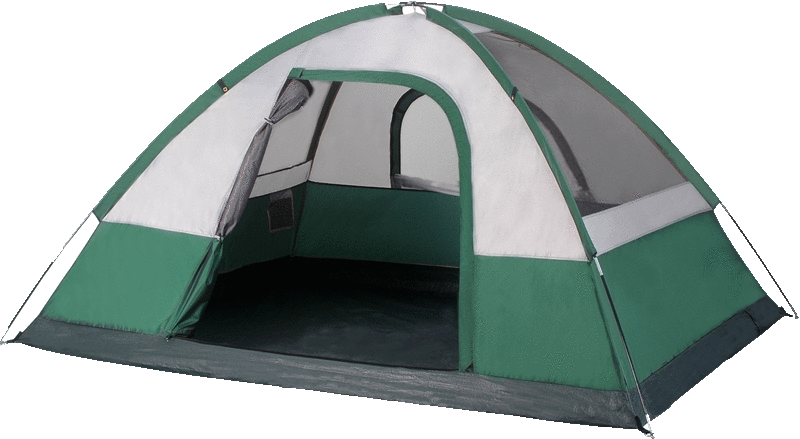
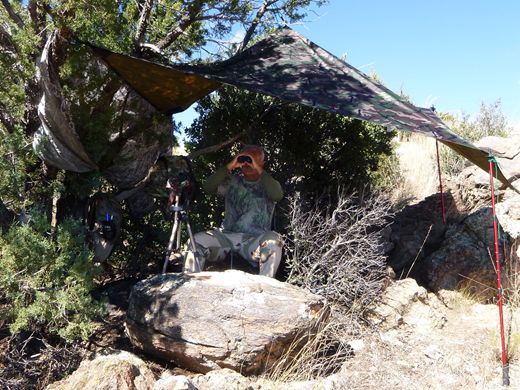
 .
.
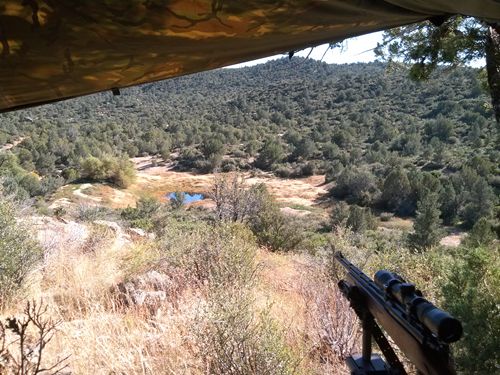

 This is the rifle that turned me on to the Remington 600 in the first place.
I’ve talked about it in these pages a number of times. I mentioned it in my
This is the rifle that turned me on to the Remington 600 in the first place.
I’ve talked about it in these pages a number of times. I mentioned it in my
